Travel to Oslo Vacations
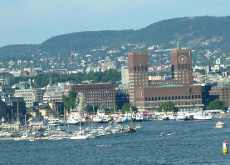
Introduction to Oslo Travel
Oslo, the capital city of Norway is a beautiful city that wraps itself around part of Oslo fjord and surrounded by hills and mountains. This history of Oslo can be dated back to 8th century, occupying by seafarers. The city was founded by King Harald Hardrade around 1048, when the King built a fort and a settlement on the left bank of the Aker river. This city has since then been on a steady growth, especially by supplying provisions to ships and trading in timber. When King Havon V (1299 -1319) officially residing the city during his reign, it was then Oslo was named as the capital city. The powerful Akershus Castle was built to provide additional protection. Nonetheless, after a century, Oslo was slowly pushed into being a provisional capital due to its weaker position in an Union with Denmark.
Most part of Oslo city was destroyed by fire in 1624. It was said that fire was set by three witches. King Christian IV of Denmark had help to rebuild the city on the right bank of the river, as well strengthened Akershus Fortress to guard against the Swedes. The King also renamed the city to Christiania, after himself. Three hundred years later, the name was changed back to Oslo.
Sights of Attraction in Oslo
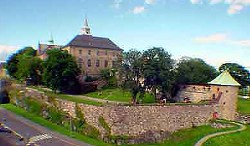 Akershus Fortress
Akershus Fortress
This Fortress was known for its strong defenses, and has never been conquered by any military power. It was built in around 1300 by King Havon V. In the 16th century, this Fortress has developed into a fortress and medieval castle. It was later used as a prison and execution ground during World War II by the Nazis. Within the Fortress wall, there includes a castle and two museums. Magnificent views of Oslo harbor, Aker Brygge and many islands can be seen from the fortress since it is built on a hill. All these special attributes has made it the top tourist attraction in Oslo.
Akershus Castle
It was built in 1300 by King Havon V as a medieval castle and has since been playing an important role in the Norwegian history. This castle is now used a state representations, recreation and cultural events. Castle church, Royal Mausoleum and the dungeon are few of the interesting sites to visit.
The armed forces Museum This museum covers Norwegian military history, from Viking era (900 – 1000) to Nordic Wars under Danish ruling (1400-1814) to union with Sweden (1814-1905) and to modern history from World War II to Cold war period. This museums is located on the lower grounds of Akershus Fortress in an impressive brick wall building built in 1860.
Norway Resistance Museum exhibits the entire 5 years history of World War II, from occupation to liberation. This museum is located in the Akershus Fortress as well, housed in a 17th century stone vault. It makes walking through the long and winding stone vault an unique experience.
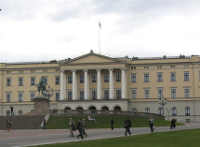 Royal Palace – This residence of the Royals was built in 1825 and takes 24 years to complete constructions. It was built when Oslo was under the city name of Christiania. Today, this is the official residence of the present Norwegian monarch. Everyday at 1330, the Royal Guards marches and changes shift at the front of the palace.
Royal Palace – This residence of the Royals was built in 1825 and takes 24 years to complete constructions. It was built when Oslo was under the city name of Christiania. Today, this is the official residence of the present Norwegian monarch. Everyday at 1330, the Royal Guards marches and changes shift at the front of the palace.
Radhus (Town Hall) is a striking red brick twin towers constructed in 1930 but inaugurated in 1950 due to WWII. Thus it is built in a Norwegian style that recalls the 1930s structures. The design has earned the town hall a special place in Norwegian art and architecture as a artistic monuments. The Nobel Peace Prize ceremony is held in the Central Hall on December 10 each year. The town hall also serves as the political and administrative heart of Oslo.
Parliament – This central building from 1866 houses the Norwegian Parliament. Guided tour available.
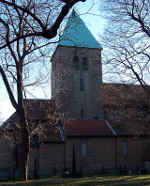 Old Aker Church is the oldest building in Oslo and the only remaining church from Middle ages. . It is believed the Church was built by King Olav Kyrre in 1080. This church had been ravaged by fire quite a few times since it was built. Interesting point is that it was built on a silver mine, which was used in the early Viking age.
Old Aker Church is the oldest building in Oslo and the only remaining church from Middle ages. . It is believed the Church was built by King Olav Kyrre in 1080. This church had been ravaged by fire quite a few times since it was built. Interesting point is that it was built on a silver mine, which was used in the early Viking age. 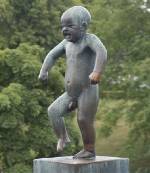
Vigeland Sculpture Park – This park boast about 200 statues created by sculptor Gustav Vigeland (1869-1943). These granite, wrought iron or bronze status depicts stages and episodes of human life. Work of Gustav Vigeland was once controversial but now is much beloved by the Norwegians.
Viking Ship Museums is the most unique museum in Oslo. Three remarkable, well preserved oaken long ships from the 9th century are on display. These ships serve as tombs for nobleman, of whom were buried together with plenty of jewels, food, furniture for their afterlife. The largest ships required 30 rower. The ships were discovered in 19th century at blue clay along Oslo Fyord.
Fram museum houses exploration ship Fram, specially built in 1892 to withstand the crushing force of the polar icecap. It carried Fridtjof Nansen on his expedition to North Pole. It was then used again by Roald Amundsen in 1911 to South Pole, whereby he and his crew were the first to reach.
Kon-Tiki Museum exhibits raft made by balsa logs that Thor Heyerdahl used to sailed in 1947. The purpose of the sailing is to proven his theory that the Polynesian people could have migrated from Peru on similar rafts. After sailing 2,000 miles with 5 crew members, his theory was taken seriously. There were another expedition in 1970 to prove ancient Egyptians might have sailed to Americas. His tested his theory by a boat made of papyrus reeds, the Ra II, from North Africa to Barbados. Ra is also on displayed in the museum.
Ostensjo Lake is Oslo richest wetland and bird reserve. More than 200 species of birds have been recorded nesting here. Take a hike of around 4 to 5 kilometers to stroll along the lake and enjoy the natural beauty, a great way to spend an afternoon here.
Shopping / souvenirs – Great shopping areas are around Karl Johans Gate, along Bogstadveien and Aker Brygge. The main shopping areas are within walking distance of the pier. Popular souvenirs are carvings, painted wood figurines, knitwear with ‘reindeer’, crystal and glassware such as vases, plates or figurines.
Transportation in Oslo (Oslo Pass)
This pass is the cheapest alternative to travel around Oslo at a minimal cost. It can be used to enter most of the museums and sights of attractions, free public transport in certain routes and free parking in Oslo municipal car park. Oslo pass can be obtained from City Hall, Central station and cruise ship terminal.